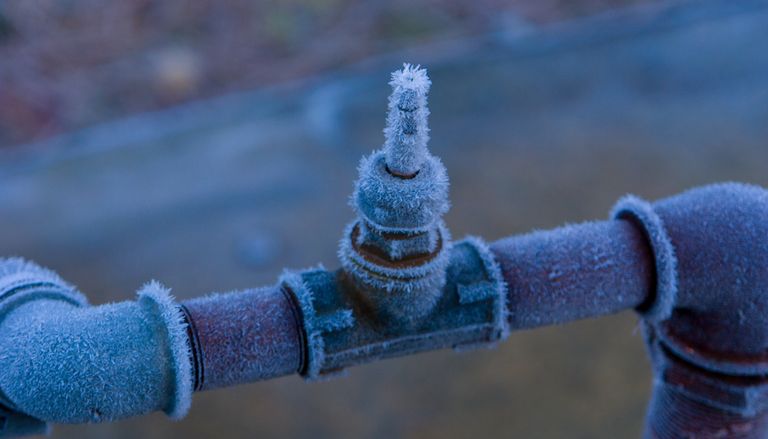Important Advice for Preventing Frozen Pipes in Cold Weather Seasons
Important Advice for Preventing Frozen Pipes in Cold Weather Seasons
Blog Article
This post down below relating to Preventing and dealing with frozen pipes is exceedingly engaging. Read it for your own benefit and figure out what you think of it.

Cold weather can ruin your pipes, specifically by freezing pipelines. Here's just how to prevent it from happening and what to do if it does.
Intro
As temperature levels decrease, the threat of icy pipes rises, possibly resulting in costly fixings and water damage. Comprehending exactly how to avoid icy pipes is important for house owners in cool climates.
Recognizing Frozen Pipelines
What triggers pipelines to ice up?
Pipes ice up when revealed to temperature levels below 32 ° F (0 ° C) for extended durations. As water inside the pipes ices up, it expands, taxing the pipe wall surfaces and possibly triggering them to rupture.
Threats and problems
Icy pipelines can bring about water disruptions, residential or commercial property damages, and expensive repairs. Ruptured pipelines can flooding homes and create extensive structural damages.
Indicators of Frozen Piping
Recognizing icy pipelines early can avoid them from rupturing.
How to identify frozen pipelines
Seek lowered water flow from taps, unusual smells or noises from pipes, and noticeable frost on subjected pipelines.
Avoidance Tips
Shielding vulnerable pipelines
Cover pipelines in insulation sleeves or use heat tape to safeguard them from freezing temperature levels. Concentrate on pipelines in unheated or exterior locations of the home.
Heating methods
Keep indoor areas appropriately warmed, especially locations with pipes. Open up cupboard doors to allow cozy air to flow around pipelines under sinks.
Protecting Outside Pipes
Yard tubes and outdoor taps
Separate and drain pipes garden tubes prior to wintertime. Mount frost-proof faucets or cover outside faucets with shielded caps.
What to Do If Your Pipes Freeze
Immediate actions to take
If you presume frozen pipelines, maintain faucets open to ease stress as the ice thaws. Make use of a hairdryer or towels taken in hot water to thaw pipelines slowly.
Long-Term Solutions
Structural adjustments
Think about rerouting pipelines away from outside wall surfaces or unheated areas. Add extra insulation to attics, basements, and crawl spaces.
Upgrading insulation
Purchase high-grade insulation for pipes, attics, and walls. Appropriate insulation aids keep regular temperature levels and lowers the danger of frozen pipes.
Verdict
Preventing icy pipes needs positive measures and fast feedbacks. By comprehending the reasons, signs, and safety nets, property owners can safeguard their plumbing throughout winter.
6 Proven Ways to Prevent Frozen Pipes and Protect Your Home
Disconnect and Drain Garden Hoses
Before winter arrives, start by disconnecting your garden hoses and draining any remaining water. Close the shut-off valves that supply outdoor hose bibs and leave the outdoor faucet open to allow any residual water to drain. For extra protection, consider using faucet covers throughout the colder months. It’s also important to drain water from any sprinkler supply lines following the manufacturer’s directions.
Insulate Exposed Pipes
Insulating your pipes is an effective way to prevent freezing. Pipe insulation is readily available at home improvement stores and is relatively inexpensive. Pay close attention to pipes in unheated areas such as the attic, basement, crawl spaces, or garage. Apply foam insulation generously to create a buffer against the cold. You can also wrap your pipes in heat tape or thermostat-controlled heat cables for added warmth.
Seal Air Leaks
Inspect your home for any cracks or openings that could let in cold air. Seal any holes around the piping in interior or exterior walls, as well as the sill plates where your home rests on its foundation. Additionally, make sure to keep your garage door closed unless you’re entering or exiting. Leaving it open creates a significant air leak that can lead to frozen pipes.
Allow Warm Air Circulation
During cold snaps, it’s essential to allow warm air to circulate evenly throughout your home. Leave interior doors ajar to promote better airflow. Open kitchen and bathroom cabinets to help distribute heat consistently around the rooms. If you have small children or pets, be sure to remove any household chemicals or potentially harmful cleaners from open cabinets for safety.
Let Faucets Drip
A small trickle of water can make a big difference in preventing ice formation inside your pipes. When temperatures drop significantly, start a drip of water from all faucets served by exposed pipes. This continuous flow helps prevent the water from freezing. Additionally, running a few faucets slightly can relieve pressure inside the pipes, reducing the chances of a rupture if the water inside does freeze.
https://choateshvac.com/6-proven-ways-to-prevent-frozen-pipes-and-protect-your-home/

As a passionate reader on Prevent Frozen Pipes , I think sharing that article post was important. Sharing is caring. Helping others is fun. We treasure reading our article about Winter Plumbing Precautions: Preventing Frozen Pipes.
Book Now Report this page